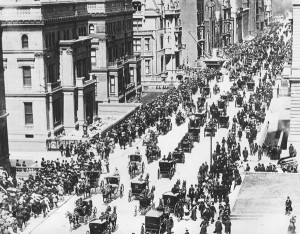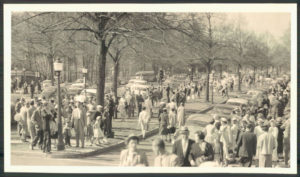The Rev. Francis. Effingham Lawrence is my wife’s second cousin four times removed. He was a High Church Episcopal clergyman who lived from 1827-1879. From 1839 to his death he was assistant and then rector of the Church of the Holy Communion in Manhattan, a church founded by Dr. William Muhlenberg, an Evangelical Catholic.
Muhlenberg, like the Ritualists of England, used Catholic paraphernalia to appeal to the poor, who found bare churches and hour-long Calvinist sermons a touch on the cold side. He thought that the poor should be served with grace and beauty.
The Church of the Holy Communion was the first church to use flowers on the altar, and after the Easter service the congregation in procession brought the flowers to the sick in the hospital the church had founded. This seems to have been the origin of the New York custom of the Easter Parade. Other churches took up the custom of Easter flowers; as Francis Lawrence said in thus funeral sermon of 1877, it was –“a practice now indeed carried to such a silly and wasteful extreme, many churches seeming rather flower-shops at Easter than Sanctuaries of the Almighty, that he almost regretted that he had introduced the custom.”
And the Easter Parade no longer was in service to the poor:
As Irving Berlin’s song has it in the Judy Garland and Fred Astaire Easter Parade:
In your Easter bonnet, with all the frills upon it,
You’ll be the grandest lady in the Easter parade.
I’ll be all in clover and when they look you over,
I’ll be the proudest fellow in the Easter parade.
On the avenue, Fifth Avenue, the photographers will snap us,
And you’ll find that you’re in the rotogravure.
The Baltimore Sun in 1927 reported that 100,000 Baltimoreans participated in the Easter Parade on Charles St. The women wore wore fashionable black and white, but the men added color with their morning clothes and top hats or grey suits.
The parade was still a custom in 1950:

